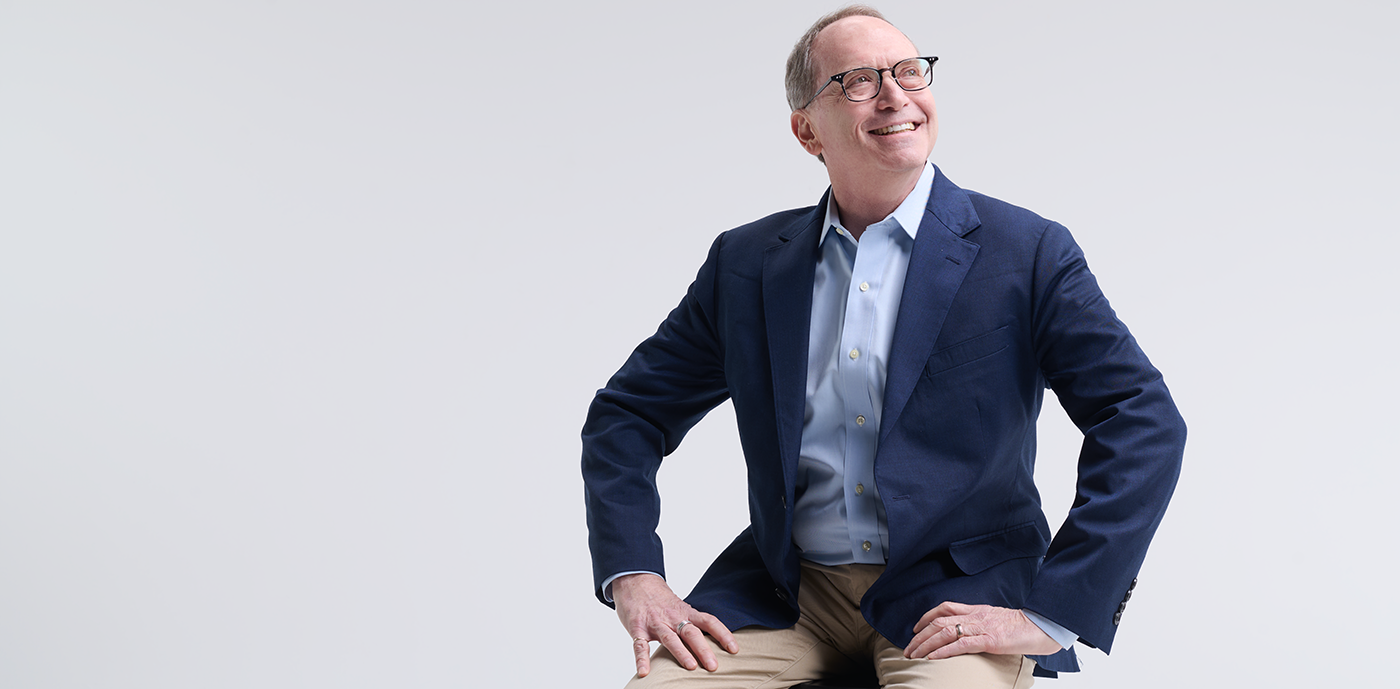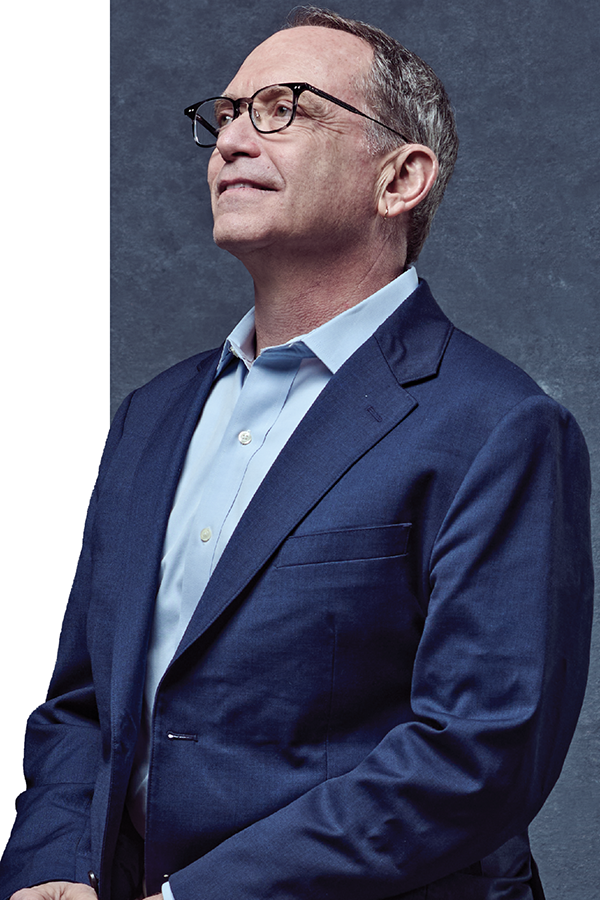Expanding complete pediatric care beyond the walls of a clinic
By Josh Friesen
For Ignite Magazine
Photos by Jason Hill
Listen to the audio story
Standing in an emergency department at a hospital in New Mexico, Benjamin Hoffman, M.D., was grappling with yet another preventable tragedy.
He was in his first pediatric position after residency at a hospital with the Indian Health Service on the Navajo Nation. Within a single month, he’d been called into the emergency department five separate times to help stabilize a child who’d been critically injured in a car crash. None of the children had been restrained in car seats or had their seatbelts on. The injuries were preventable, and Hoffman — angry at the failures of the systems that work to support children and families — knew he needed to work with the community to spark change.
“I knew I could, as a pediatrician in the clinic, talk to families and try and educate them, but that only goes so far,” said Hoffman, now a professor of pediatrics at the OHSU School of Medicine and medical director of OHSU Doernbecher Children’s Hospital’s Child Injury Prevention Program and Tom Sargent Safety Resource Center. “Stepping back and asking where the gaps were, what barriers existed and what assets existed in the community that we could collectively employ to build solutions was an incredibly powerful experience.”

That was nearly 30 years ago. Hoffman realized that complete pediatric care expands beyond the walls of a clinic, needs to be viewed through a health equity lens and is influenced by lawmakers, community leaders and social justice advocates. His dedication to influencing policy, connecting authentically with families and communities and advocating for children’s health and injury prevention has led to his recent election as president of the American Academy of Pediatrics, the largest professional association of pediatricians in the U.S. with over 67,000 members.
“The advocacy work — the community engagement work — it’s crucial,” Hoffman said. “Every child should have the opportunity to achieve their greatest potential, and there are so many structural barriers to that.”
Hoffman arrived at Doernbecher in 2011 because the children’s hospital values what he values. Doernbecher understands how children’s health is fundamentally different from adult health — how a strong foundation of well-being early in life is crucial to positive health outcomes later.
“Every child should have the opportunity to achieve their greatest potential, and there are so many structural barriers to that.”
Benjamin Hoffman

Hoffman owes a lot of his work at OHSU to community support. Funds from Injury Free Coalition for Kids and the Credit Unions for Kids formed the Tom Sargent Safety Resource Center, and private philanthropy has been essential in furthering the Child Injury Prevention Program’s mission. This support has helped establish OHSU Doernbecher Children’s Hospital as one of the best children’s hospitals in the U.S.
By empowering communities, inspiring a new generation of pediatric leaders and shedding light on historical, systemic inequities, Hoffman hopes to spur positive change for the future of children’s health.
“It’s not just lip service — we have a fundamental role in changing policy at the institutional level, the state level and the federal level,” he said. “And I’m grateful for that work OHSU enables us to do.”
This is an additional audio story featuring highlights from a conference Hoffman spoke at in the spring of 2024.
Transcript
It’s unbelievable. I trained 30 years ago, and I can’t imagine we would be in the place that we are now, with the science and with the clinical care. The thing that I would not have predicted is that we’d be where we are around advocacy. And one of the reasons I am so delighted to be part of Doernbecher is that we have leadership that has recognized the importance of advocacy.
Dr. Benjamin Hoffman is a pediatrician and nationally recognized expert in child injury prevention and education. He currently serves as medical director of OHSU Doernbecher Children’s Hospital’s Child Injury Prevention Program and Tom Sargent Safety Resource Center and is vice-chair for Community Health and Advocacy for the Department of Pediatrics. His dedication to influencing policy, connecting authentically with families and communities, and advocating for children’s health and injury prevention has led to his recent election as president of the American Academy of Pediatrics. Here are some highlights from a conference he spoke at in March 2024.
We established one of the first strategic plans in the country for the Department of Pediatrics that included advocacy as a core mission, in addition to the clinical care, to the education and to the research. Advocacy is a really hard word, and if we went around here and asked everybody to define it, I would get as many different definitions as are people present today.
So we need to dig in and understand what we mean by advocacy. This is what the dictionary says, “the act of pleading for or supporting.” We spend our days bearing witness to how society, how our culture fails kids and families and communities. Inevitably, we see a thing or two, and there becomes a point where we need to be able to do a thing or two. We’ve started a Reach Out and Read program, an early literacy program in the NICU, because we know that reading leads to improved brain development and bonding and nurturing, especially in the NICU; it’s absolutely essential.
And then there’s the medical-legal partnership. One of the things that Dana [Braner] encouraged me with when he asked me to lead our work in advocacy was to establish what’s called a medical-legal partnership; that’s lawyers who come into clinical settings and work with us to help address the needs of our families and our patients. There is a medical-legal partnership of Oregon that exists, and they did some work with our Richmond clinic that doesn’t interact with pediatrics. We talked to them about coming to Doernbecher and starting something in pediatrics.
We looked at where the need was and where the opportunity was, and we brought them in to work in the NICU. And what we did is we built the program, and there’s an example of what happens when a family is admitted to the NICU now. Once they get settled and the baby’s safe, they get screened for different aspects of social need and community need. And if there’s a need identified, they meet with an attorney, and the attorneys will help them deal with things. Most often it ends up being issues of housing, employment law, custody and issues of domestic partnership. But they’ve dealt with now hundreds of families over the last couple of years addressing things that will not be addressed otherwise.
And that has had secondary impacts, including this story, because we have a relationship with the attorneys of a family who is a patient on the general inpatient unit at Doernbecher, not the NICU, who was living in their car, and they came to the attention of us and the medical-legal partnership, and we got them plugged in, and they got housing. That would not have happened if we did not have a medical-legal partnership.
We think about academic pediatrics as a three-legged stool, and the three legs are usually education, scholarship and service — clinical service and other service. I am always asked, “Do you think advocacy should be a fourth leg?” And I say no, because advocacy is the seat that holds everything together. Thank goodness we at Doernbecher are allowed to do that work. We’re valued for it.

